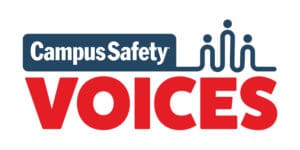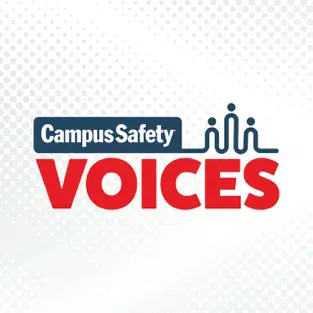You can watch or listen to the full podcast interview above. If you prefer to listen on-the-go, you can download the podcast to your mobile device on iTunes and Spotify! Make sure to follow or subscribe on your platform to be alerted of the latest episodes as soon as they become available.
The Clery Act requires U.S. colleges and universities to issue timely warnings and emergency notifications.

Campus Safety Voices, available on Spotify and Apple streaming platforms, features timely conversations on a wide range of topics affecting K-12 schools, institutions of higher education, and healthcare facilities.
According to Daniel Carter, who is president of Safety Advisors for Educational Campuses, “Timely warnings are triggered when an institution determines that a crime for which it must report statistics — such as a homicide, sex offense or robbery — presents a serious or continuing threat to students and employees.” On the other hand, “Emergency notifications are triggered by a far broader range of potential threats — any significant emergency or dangerous situation involving an immediate threat to the health or safety of students or employees on the campus.”
Needless to say, getting those warnings and mass notifications out to the campus community promptly is of upmost importance.
In this podcast, I interviewed Missouri State University Director of University Safety David Hall on how he and his department transitioned their timely warning and emergency notification processes from slow and tedious to fast and centralized, yet providing dispatch officers with more authority to issue alerts when appropriate.
In addition to speeding up the delivery of need-to-know information to the campus community, Hall, who is also one of this year’s Campus Safety Director of the Year finalists, says his streamlining efforts have resulted in other benefits as well.
Senior administrators are now much more aware of the safety and security events happening on campus that might not rise to the level of an emergency. Additionally, when a timely warning does need to be sent, administrators are less anxious because they are familiar with the process and trust the campus safety department.
“Your central administration has to have the trust and confidence in their campus safety division and those who are making those decisions as to what’s appropriate and what’s not,” Hall said. “It all boils down to trust. Bring those stakeholders together and really work through those scenarios and identify those nuances because those gray areas are what make it challenging and the questions always arise later on. By working through those ahead of time, you’ll find they’ll have greater confidence prior to an event. It also builds trust in that at times we are going to make a mistake, but they understand that.”
[promo_content slug=”2021-csc-texas-doy-promo”]









